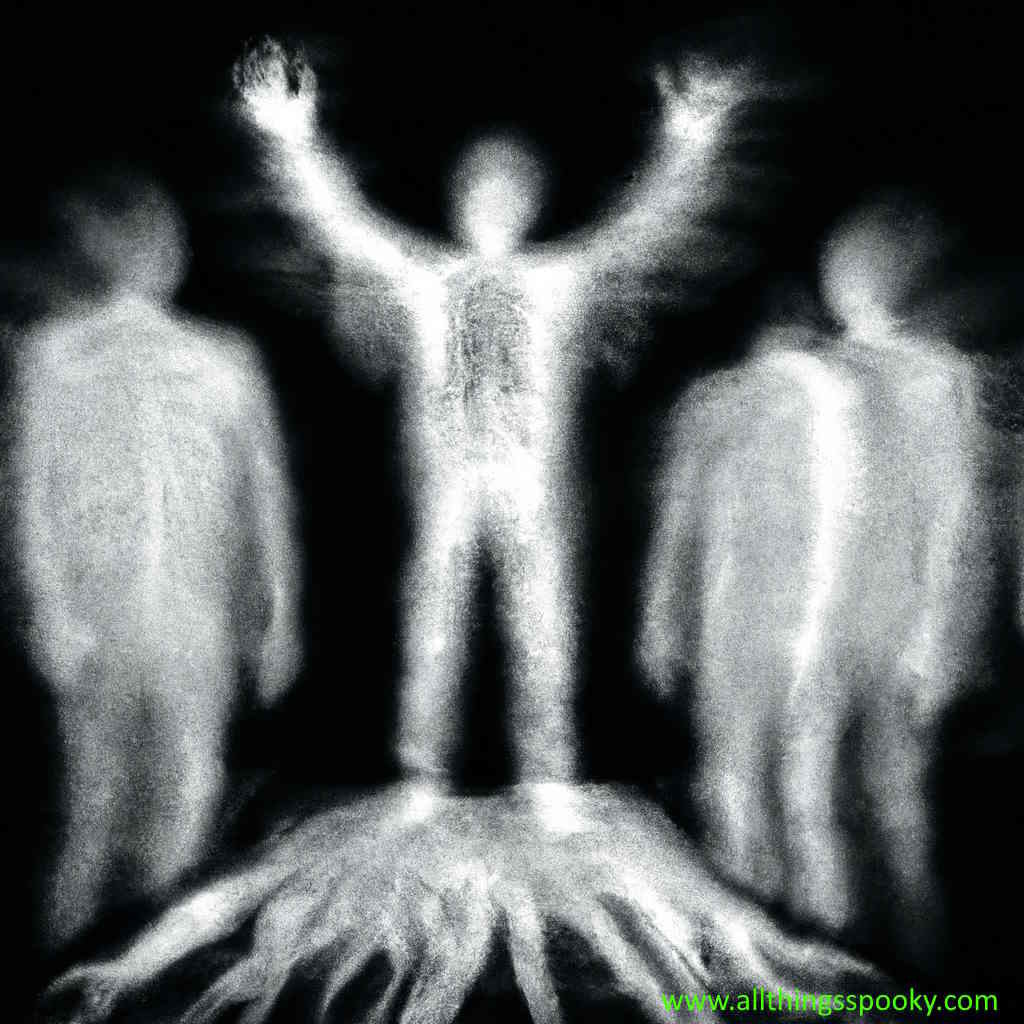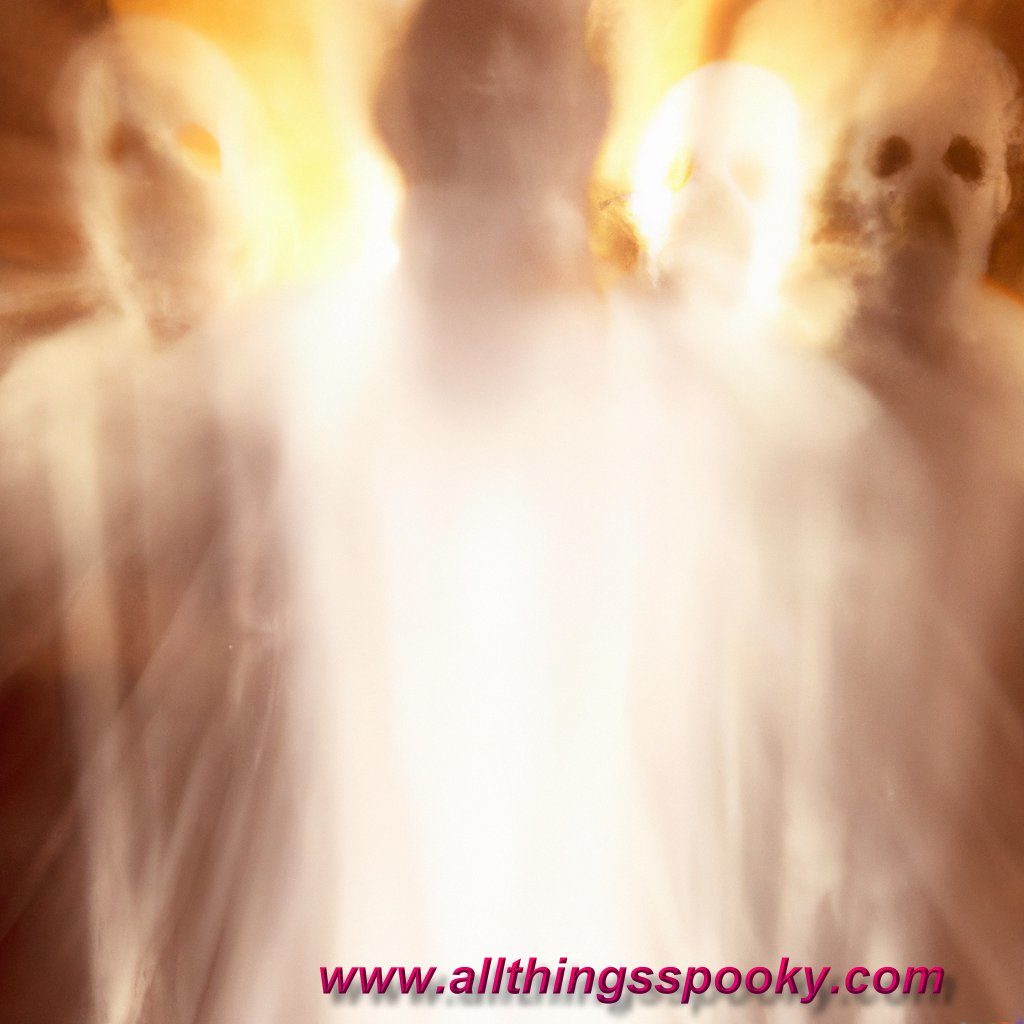
Questions about Near Death Experiences:
- What are the common elements of a Near Death Experience (NDE)?
- Can Near Death Experiences be scientifically explained?
- Are Near Death Experiences proof of an afterlife?
- Why do some people have Near Death Experiences while others don’t?
- Can Near Death Experiences be induced?
- Do cultural and religious beliefs influence Near Death Experiences?
- How do Near Death Experiences affect a person’s beliefs and attitudes towards life and death?
- Are Near Death Experiences similar to hallucinations or dreams?
- Can Near Death Experiences change a person’s personality?
- Are Near Death Experiences a spiritual or psychological phenomenon?
The Common Elements of a Near Death Experience (NDE)
A Near Death Experience (NDE) is a term used to describe a range of subjective experiences that people report having after being close to death. NDEs are commonly associated with a feeling of leaving one’s physical body and entering an alternative reality or spiritual realm. While NDEs vary from person to person, there are several common elements that are frequently reported.
One of the most common elements of an NDE is a feeling of detachment from one’s physical body. Many people report feeling like they are floating above their body, watching events from an external perspective. This experience is often accompanied by a feeling of peace and tranquility, as if all of one’s worries and concerns have been left behind.
Another common element of an NDE is the presence of a bright light. Many people report seeing a light that is much brighter and more intense than anything they have ever seen before. The light is often described as being warm and comforting, and many people report feeling drawn towards it.
In addition to the feeling of detachment and the presence of a bright light, many people also report having an out-of-body experience during an NDE. This experience is characterized by a feeling of being transported to another realm or reality, often one that is described as being more beautiful and serene than the physical world.
During an NDE, many people also report having a sense of connection with something greater than themselves. This connection is often described as being spiritual in nature, and many people report feeling a sense of love and acceptance that they have never experienced before.
Finally, many people report having a life review during an NDE. This experience involves reliving important moments from one’s life, often from the perspective of those who were affected by one’s actions. This experience is often described as being highly emotional, and many people report gaining new insights and perspectives on their life as a result.
While NDEs are often difficult to study scientifically, the common elements that are reported suggest that there is something profound and meaningful happening during these experiences. Whether NDEs represent a glimpse into an afterlife or simply a manifestation of the brain’s activity during a moment of crisis is still a matter of debate. However, the fact that so many people report similar experiences suggests that there is something deeply human and universal about the NDE phenomenon.
Scientific Explanation of Near Death Experiences
Near Death Experiences (NDEs) have been reported by people across different cultures and religions. While these experiences have been a topic of fascination and curiosity for centuries, there is still no clear consensus on what causes them. However, scientists have been trying to unravel the mystery behind NDEs and provide a scientific explanation for these experiences.
One of the most popular theories to explain NDEs is the lack of oxygen theory. According to this theory, NDEs occur when the brain is deprived of oxygen due to a life-threatening event. The lack of oxygen triggers a series of chemical reactions in the brain that result in the NDE experience. This theory is supported by the fact that some of the symptoms of an NDE, such as the feeling of floating or leaving the body, can also be induced by oxygen deprivation.
Another theory that attempts to explain NDEs is the neurochemical theory. This theory suggests that NDEs are a result of changes in the levels of certain chemicals in the brain, such as endorphins and neurotransmitters. These changes occur during a life-threatening event and result in the NDE experience. This theory is supported by the fact that some of the symptoms of an NDE, such as feelings of euphoria and peace, are associated with the release of endorphins.
Another theory that attempts to explain NDEs is the psychological theory. This theory suggests that NDEs are a result of psychological and emotional factors that come into play during a life-threatening event. For example, a person may have an NDE if they are dealing with unresolved emotional issues or trauma. This theory is supported by the fact that some of the symptoms of an NDE, such as the life review, are associated with emotional processing.
Despite these theories, there is still no consensus on what causes NDEs. One reason for this is the difficulty in studying NDEs. Since NDEs occur during life-threatening events, it is difficult to conduct research on these experiences. Furthermore, since NDEs are subjective experiences, it is difficult to compare and analyze data across different individuals.
Despite these challenges, scientists continue to study NDEs in order to unravel the mystery behind these experiences. By understanding what causes NDEs, scientists hope to shed light on the nature of consciousness and the human mind. While there may not be a clear answer yet, the scientific investigation into NDEs is a fascinating and promising field of research.

Proof of Afterlife through Near Death Experiences
Near Death Experiences (NDEs) have long been associated with the concept of an afterlife. Many people who have had an NDE report seeing visions of heaven or encountering deceased loved ones. This has led some people to believe that NDEs provide proof of an afterlife. However, despite the compelling stories and experiences reported by NDErs, there is still no scientific evidence to support the idea of an afterlife.
One of the challenges in using NDEs as proof of an afterlife is the subjective nature of these experiences. NDEs are highly personal experiences, and the details of one person’s experience may differ significantly from another person’s experience. This makes it difficult to compare and analyze NDEs in a scientific manner.
Another challenge is the fact that NDEs can be induced by factors other than a life-threatening event. For example, some people have reported having NDE-like experiences after taking certain drugs or during meditation. This suggests that NDEs may not necessarily be a result of an actual near-death experience.
Furthermore, some skeptics have pointed out that the visions and experiences reported by NDErs can be explained by natural phenomena, such as the release of certain chemicals in the brain during a life-threatening event. Skeptics argue that these experiences do not necessarily provide evidence of an afterlife, but rather reflect the brain’s response to a life-threatening event.
Despite these challenges, many people continue to believe that NDEs provide proof of an afterlife. Some argue that the consistency of certain themes and experiences reported by NDErs, such as the feeling of floating or leaving the body, provide evidence of a common experience that is not easily explained by natural phenomena. Others point to cases where NDErs report seeing deceased loved ones or having out-of-body experiences that coincide with events that occurred during their near-death experience, as evidence of an afterlife.
However, even proponents of the idea of an afterlife through NDEs acknowledge that the evidence is purely anecdotal and subjective. Without scientific evidence, it is difficult to say whether NDEs provide proof of an afterlife or not. While the study of NDEs is a fascinating and promising field of research, it is important to approach the subject with skepticism and caution.
In conclusion, while NDEs are often associated with the concept of an afterlife, there is still no scientific evidence to support this idea. The subjective nature of NDEs and the challenges in studying these experiences make it difficult to draw definitive conclusions about their nature and origin. While the study of NDEs is a fascinating and important field of research, it is important to approach the subject with an open mind and a healthy dose of skepticism. Only through rigorous scientific study can we hope to uncover the true nature of NDEs and their potential implications for the concept of an afterlife.
Cultural Differences in Near Death Experiences
While Near Death Experiences (NDEs) have been reported across different cultures and religions, the content and interpretation of these experiences can vary significantly. Cultural differences can influence the way people perceive and interpret NDEs, leading to differences in the content and meaning of these experiences.
One example of cultural differences in NDEs is the perception of light. In Western cultures, NDErs often report seeing a bright light or tunnel during their experience. However, in non-Western cultures, NDErs may report seeing different types of light, such as colored lights or flashes of light. The interpretation of these lights can also vary across cultures, with some cultures associating the light with a divine presence, while others interpret it as a sign of impending death.
Another example of cultural differences in NDEs is the presence of deceased loved ones. In Western cultures, NDErs often report encountering deceased loved ones during their experience. However, in some non-Western cultures, NDErs may encounter spiritual guides or ancestors instead. The interpretation of these encounters can also vary, with some cultures viewing them as evidence of an afterlife, while others view them as a natural part of the dying process.
Cultural differences can also influence the interpretation of other aspects of NDEs, such as the life review or the feeling of leaving the body. For example, some cultures may interpret the life review as a judgment of one’s actions, while others may view it as an opportunity for spiritual growth. Similarly, the feeling of leaving the body can be interpreted as a sign of transcendence in some cultures, while in others it may be seen as a negative experience.
While cultural differences in NDEs can be fascinating, they also highlight the challenges in studying these experiences. The subjective nature of NDEs means that the interpretation of these experiences can be influenced by cultural, social, and religious factors, making it difficult to draw definitive conclusions about their nature and meaning. In addition, the limited cross-cultural research on NDEs makes it difficult to fully understand the extent and scope of these cultural differences.
Despite these challenges, cross-cultural research on NDEs has uncovered some interesting findings. For example, a study conducted by Kenneth Ring and Sharon Cooper in 1997 found that NDEs in India and the United States shared some similarities, such as the perception of a bright light and encounters with spiritual beings. However, there were also some differences, such as the type of spiritual beings encountered and the interpretation of the experience.
Other studies have found that cultural differences in NDEs can also be influenced by individual factors, such as the person’s religious beliefs and level of education. For example, a study conducted by Kelly Bulkeley and Bruce Greyson in 1989 found that NDErs with a strong religious background were more likely to interpret their experience as evidence of an afterlife than those with a secular background.
While cultural differences in NDEs can be fascinating, it is important to approach these experiences with a critical and open-minded perspective. Cultural differences should not be used to discount or invalidate NDEs from different cultures, but rather should be viewed as a way to better understand the complex nature of these experiences. Cross-cultural research on NDEs can also help to shed light on the universal aspects of these experiences, such as the feeling of peace and love, which have been reported across different cultures and religions.
In conclusion, cultural differences in Near Death Experiences highlight the challenges in studying these experiences and the need for cross-cultural research. While cultural differences can influence the interpretation and meaning of NDEs, they should not be used to discount or invalidate these experiences from different cultures. Rather, cultural differences should be viewed as a way to better understand the complex nature of NDEs and the way they are influenced by cultural, social, and religious factors. Only through rigorous scientific study can we hope to uncover the true nature of NDEs and their potential implications for our understanding of life, death, and consciousness.

Can NDEs be induced?
The question of whether NDEs can be induced is an intriguing one, as it could potentially allow researchers to study NDEs in a controlled setting and gain a better understanding of their nature and underlying mechanisms. While spontaneous NDEs are often associated with life-threatening situations, there have been attempts to induce similar experiences through various means, such as using drugs or stimulating specific areas of the brain.
One of the most well-known attempts to induce NDEs was conducted by Dr. Karl Jansen, who administered the drug ketamine to volunteers in the late 1990s. Ketamine is a dissociative anesthetic that can cause hallucinations and altered states of consciousness. Jansen reported that some of his volunteers had experiences similar to NDEs, such as encountering a bright light, feeling a sense of peace, and having out-of-body experiences.
Other researchers have attempted to induce NDE-like experiences through other means, such as using virtual reality or transcranial magnetic stimulation. However, the results of these studies have been mixed, and it is still unclear whether it is possible to reliably induce NDEs in a controlled setting.
While the idea of inducing NDEs is intriguing, it is important to approach this topic with caution. NDEs are deeply personal and subjective experiences that can have profound effects on individuals. Attempts to induce NDEs in a research setting could potentially have unintended consequences, such as causing distress or trauma to participants. Therefore, any attempts to induce NDEs should be carefully designed and conducted with the utmost care and ethical considerations.
Are NDEs evidence of an afterlife?
One of the most controversial aspects of NDEs is their potential implications for our understanding of life after death. Many people interpret NDEs as evidence of an afterlife, based on the experiences of encountering deceased loved ones, seeing a “life review” of their actions, or feeling a sense of peace and love that they interpret as a glimpse of heaven.
However, it is important to note that the interpretation of NDEs as evidence of an afterlife is not supported by scientific evidence. While NDEs can be profound and transformative experiences, there is no empirical evidence to support the existence of an afterlife or a soul that separates from the body at death.
Furthermore, some researchers have proposed alternative explanations for NDEs that do not involve an afterlife. For example, the “dying brain hypothesis” proposes that NDEs are a result of changes in brain function that occur during the dying process, such as reduced blood flow to the brain or the release of endorphins. This hypothesis suggests that NDEs are a natural and biological phenomenon that can be explained through scientific means, rather than as evidence of an afterlife.
In conclusion, while many people interpret NDEs as evidence of an afterlife, this interpretation is not supported by scientific evidence. The subjective and complex nature of NDEs makes it difficult to draw definitive conclusions about their meaning and implications. Therefore, it is important to approach the topic of NDEs with an open and critical perspective, and to recognize that alternative explanations for these experiences may exist that do not involve an afterlife.

How have NDEs impacted beliefs about death and dying?
Despite the lack of scientific consensus on the nature of NDEs, these experiences have had a significant impact on popular beliefs about death and dying. Many people who have had NDEs report that their experiences have changed their attitudes towards death and dying, making them less fearful and more accepting of the inevitability of death.
NDEs have also influenced popular culture, with numerous books, movies, and TV shows depicting NDEs and their potential implications. These depictions often portray NDEs as transformative and mystical experiences that offer a glimpse into the afterlife or a higher power.
Furthermore, some people who have had NDEs have become advocates for end-of-life care and spiritual exploration. They have used their experiences to promote greater awareness and compassion towards those who are dying, as well as to encourage people to explore their own spirituality and beliefs about death.
However, it is important to note that not everyone who has had an NDE has had a positive or transformative experience. Some people report feeling traumatized or confused by their experiences, and the interpretation of NDEs as evidence of an afterlife can be a source of conflict or tension for those who do not share these beliefs.
In conclusion, NDEs have had a significant impact on popular beliefs about death and dying, as well as on the lives of individuals who have had these experiences. While the scientific understanding of NDEs is still evolving, it is clear that these experiences have the potential to be transformative and meaningful for those who have them, and to inspire greater compassion and awareness around end-of-life care and spiritual exploration.
Can NDEs be explained by science?
One of the main challenges in studying NDEs is the fact that they are deeply personal and subjective experiences that are difficult to measure or quantify using traditional scientific methods. Nevertheless, there have been numerous attempts to study the underlying mechanisms of NDEs using a variety of scientific approaches, such as brain imaging, physiological monitoring, and psychological assessments.
One of the most widely studied aspects of NDEs is the phenomenon of the out-of-body experience (OBE), in which people report feeling as though they have left their physical body and are observing their surroundings from a detached perspective. Studies using brain imaging techniques such as functional magnetic resonance imaging (fMRI) have suggested that OBEs may be associated with changes in activity in the temporoparietal junction, a region of the brain that is involved in self-processing and spatial perception.
Other studies have focused on the role of neurotransmitters and other physiological factors in NDEs. For example, some researchers have proposed that the release of endorphins or other neurochemicals during the dying process could lead to altered states of consciousness that resemble NDEs.
However, despite these efforts, there is still no consensus on the underlying mechanisms of NDEs, and many aspects of these experiences remain unexplained by current scientific models. The complex and subjective nature of NDEs makes them difficult to study using traditional scientific methods, and more research is needed to fully understand the nature and implications of these experiences.
Are NDEs universal or culturally specific?
Another intriguing question about NDEs is whether they are universal experiences that occur across different cultures and belief systems, or whether they are influenced by cultural factors and beliefs.
While NDEs have been reported in a wide range of cultures and geographic regions, there is evidence to suggest that cultural factors can influence the content and interpretation of these experiences. For example, some studies have suggested that people from Western cultures are more likely to report encountering a “tunnel” or “void” during an NDE, while people from non-Western cultures may be more likely to report encounters with deceased ancestors or religious figures.
Other studies have also suggested that cultural beliefs about death and the afterlife can shape the interpretation of NDEs. For example, in cultures that believe in reincarnation, NDEs may be interpreted as evidence of the soul leaving the body and entering a new life. In cultures that emphasize the importance of judgment and punishment in the afterlife, NDEs may be interpreted as a warning or reminder of the consequences of one’s actions.
However, it is important to note that while cultural factors may influence the content and interpretation of NDEs, the core elements of these experiences – such as feelings of peace, love, and transcendence – appear to be universal. Studies have shown that people from different cultures and belief systems report similar core experiences during NDEs, suggesting that these experiences may have a fundamental, cross-cultural significance.
Moreover, the prevalence of NDEs across different cultures and belief systems suggests that they may be a natural and universal part of the human experience. While the interpretation and meaning of these experiences may be shaped by cultural factors, the fact that they occur across different contexts and geographic regions suggests that they may be rooted in common aspects of human physiology and consciousness.
In conclusion, while cultural factors may influence the content and interpretation of NDEs, the core experiences of these phenomena appear to be universal. The prevalence of NDEs across different cultures and belief systems suggests that they may be a natural and fundamental aspect of the human experience, and further research is needed to fully understand the implications and significance of these experiences.
